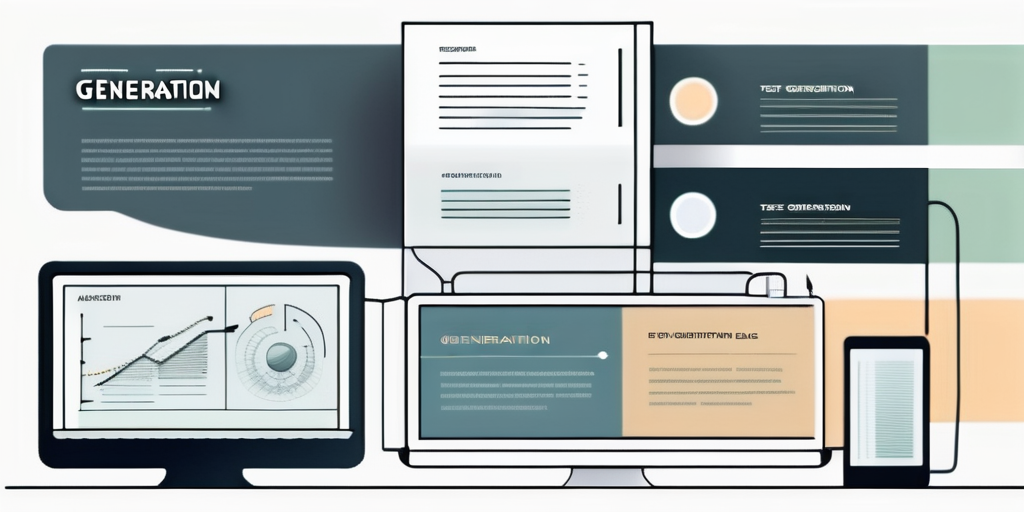In the realm of artificial intelligence, text generation, specifically through Large Language Models (LLMs) such as ChatGPT, has revolutionized the way we interact with machines. This glossary entry aims to provide a comprehensive understanding of text generation and LLMs, breaking down the complexities of these concepts into digestible sections.
Text generation is a subfield of Natural Language Processing (NLP) that focuses on creating human-like text. LLMs, on the other hand, are AI models trained on vast amounts of text data, enabling them to generate coherent and contextually relevant sentences. Let’s delve deeper into these fascinating concepts.
Understanding Text Generation
Text generation is a process where AI systems generate text that is contextually relevant and grammatically correct. This process is a part of Natural Language Generation (NLG), a broader field in NLP that deals with the creation of natural language output from data.
The goal of text generation is to create human-like text that can be used in a variety of applications, from chatbots to content creation tools. The quality of generated text is often measured by its coherence, relevance, and grammatical correctness.
Methods of Text Generation
There are several methods used in text generation, each with its unique approach and application. Rule-based methods, for instance, rely on pre-defined linguistic rules and templates. Statistical methods, on the other hand, use statistical models to predict the likelihood of a word given its previous words.
More recently, machine learning methods, particularly deep learning, have gained popularity in text generation. These methods use neural networks to learn patterns in the data and generate text based on these patterns.
Applications of Text Generation
Text generation has a wide range of applications. In content creation, it can be used to generate articles, blog posts, or social media updates. In customer service, it powers chatbots and virtual assistants that can interact with users in a natural, human-like manner.
Other applications include generating personalized emails or messages, creating product descriptions, and even writing code. The possibilities are vast and continue to grow as the technology advances.
Introduction to Large Language Models (LLMs)

Large Language Models (LLMs) are a type of AI model used in text generation. These models are trained on vast amounts of text data, allowing them to understand and generate human-like text.
LLMs learn from the patterns in the data they are trained on. They can understand context, generate coherent sentences, and even exhibit a certain level of creativity. This makes them incredibly powerful tools for a variety of applications.
How LLMs Work
LLMs work by predicting the next word in a sequence. They are trained on large corpora of text, learning the patterns and structures of the language. When given a sequence of words, they use this knowledge to predict the most likely next word.
This process is repeated to generate a full sentence or paragraph. The model continues to generate words until it reaches a specified length, encounters a stop token, or meets another specified condition.
Training LLMs
Training LLMs involves feeding them large amounts of text data and adjusting the model’s parameters based on its predictions. This is typically done using a method called backpropagation and an optimization algorithm like stochastic gradient descent.
The training process can be computationally intensive and require significant resources. However, once trained, LLMs can generate text quickly and efficiently.
ChatGPT: An Example of LLM
ChatGPT, developed by OpenAI, is an example of a Large Language Model. It is designed to generate human-like text based on the input it is given. It can write essays, answer questions, create poetry, and even write code.
ChatGPT is trained on a diverse range of internet text. However, it does not know specifics about which documents were in its training set or have access to any personal data unless explicitly provided during the conversation.
You may also like 📖
Capabilities of ChatGPT
ChatGPT can generate coherent and contextually relevant sentences. It can understand the context of a conversation, respond to prompts, and even exhibit a certain level of creativity. This makes it a powerful tool for a variety of applications, from content creation to customer service.
However, it’s important to note that while ChatGPT can generate impressively human-like text, it doesn’t truly understand the text in the way humans do. It doesn’t have beliefs or desires, and it doesn’t have access to real-world knowledge beyond what it was trained on.
Limitations and Ethical Considerations
While LLMs like ChatGPT are powerful tools, they also come with limitations and ethical considerations. For instance, they can sometimes generate incorrect or misleading information, and they can be prone to bias based on the data they were trained on.
Furthermore, there are concerns about the potential misuse of these models in generating deceptive or harmful content. As a result, it’s crucial to use these models responsibly and consider the potential implications of their use.
Conclusion
Text generation, particularly through Large Language Models like ChatGPT, is a fascinating and rapidly evolving field. These models have the potential to revolutionize many areas, from content creation to customer service, by generating human-like text.
However, as with any powerful technology, it’s important to use it responsibly and consider the potential implications. With ongoing research and development, the capabilities of these models will continue to grow, opening up new possibilities for their application.



